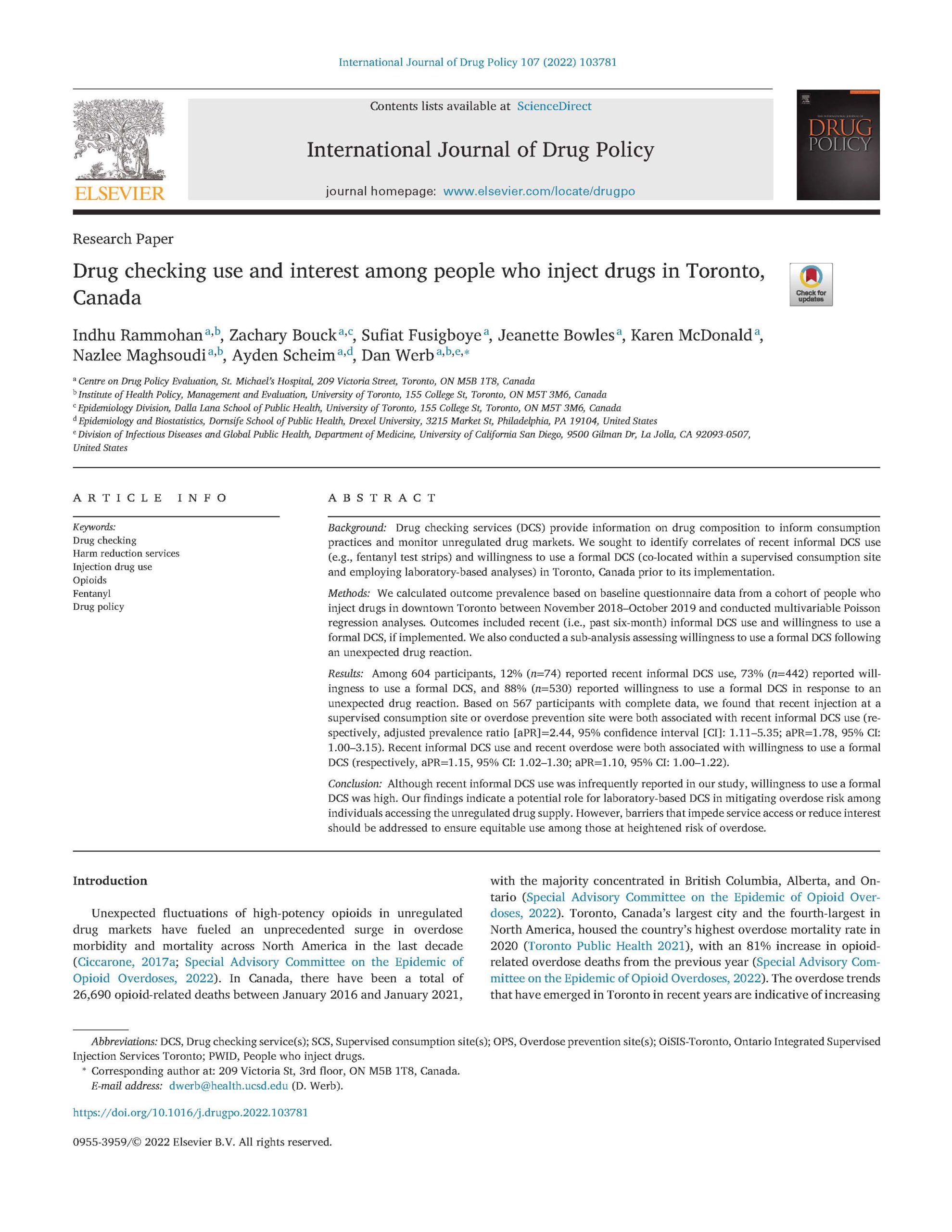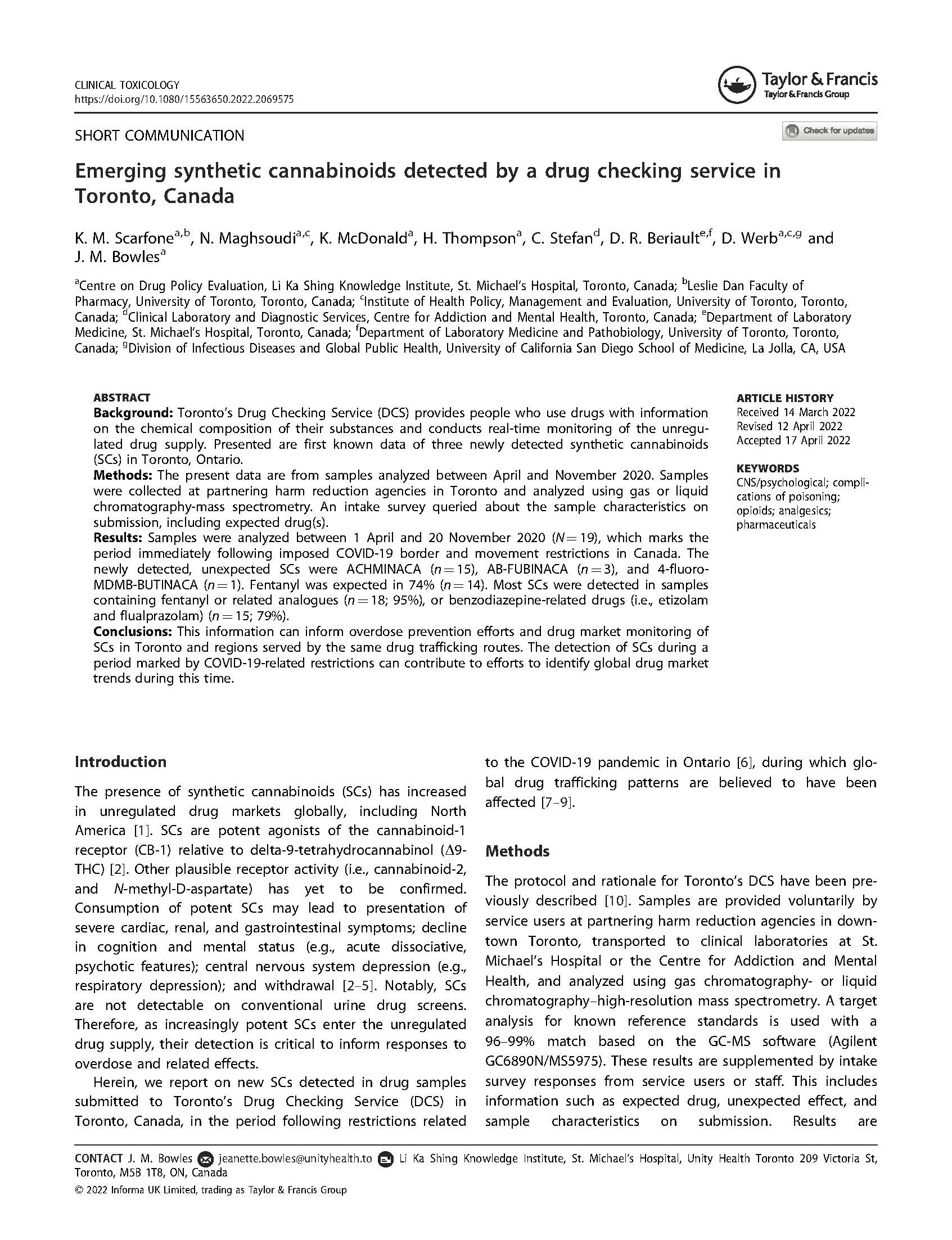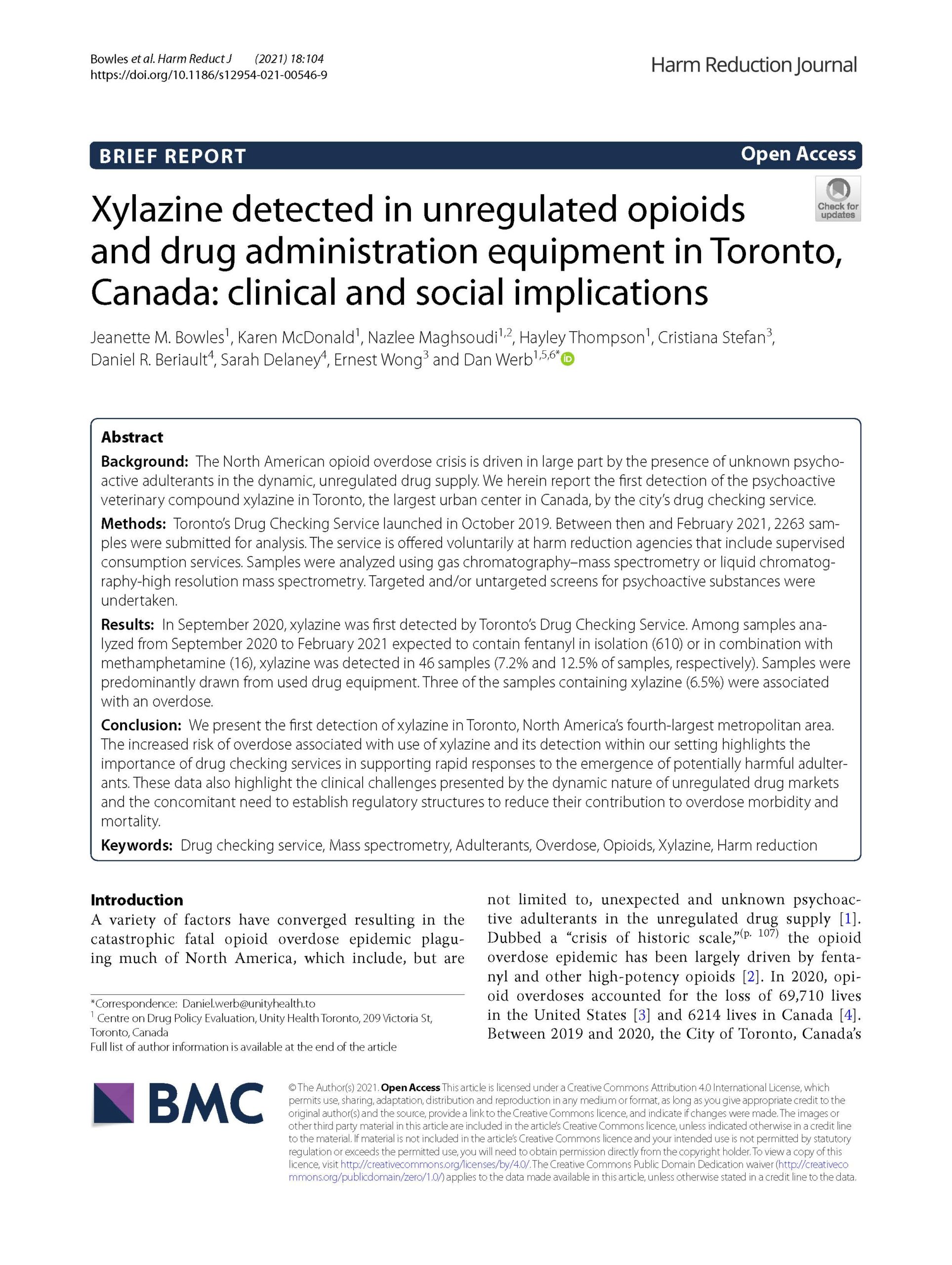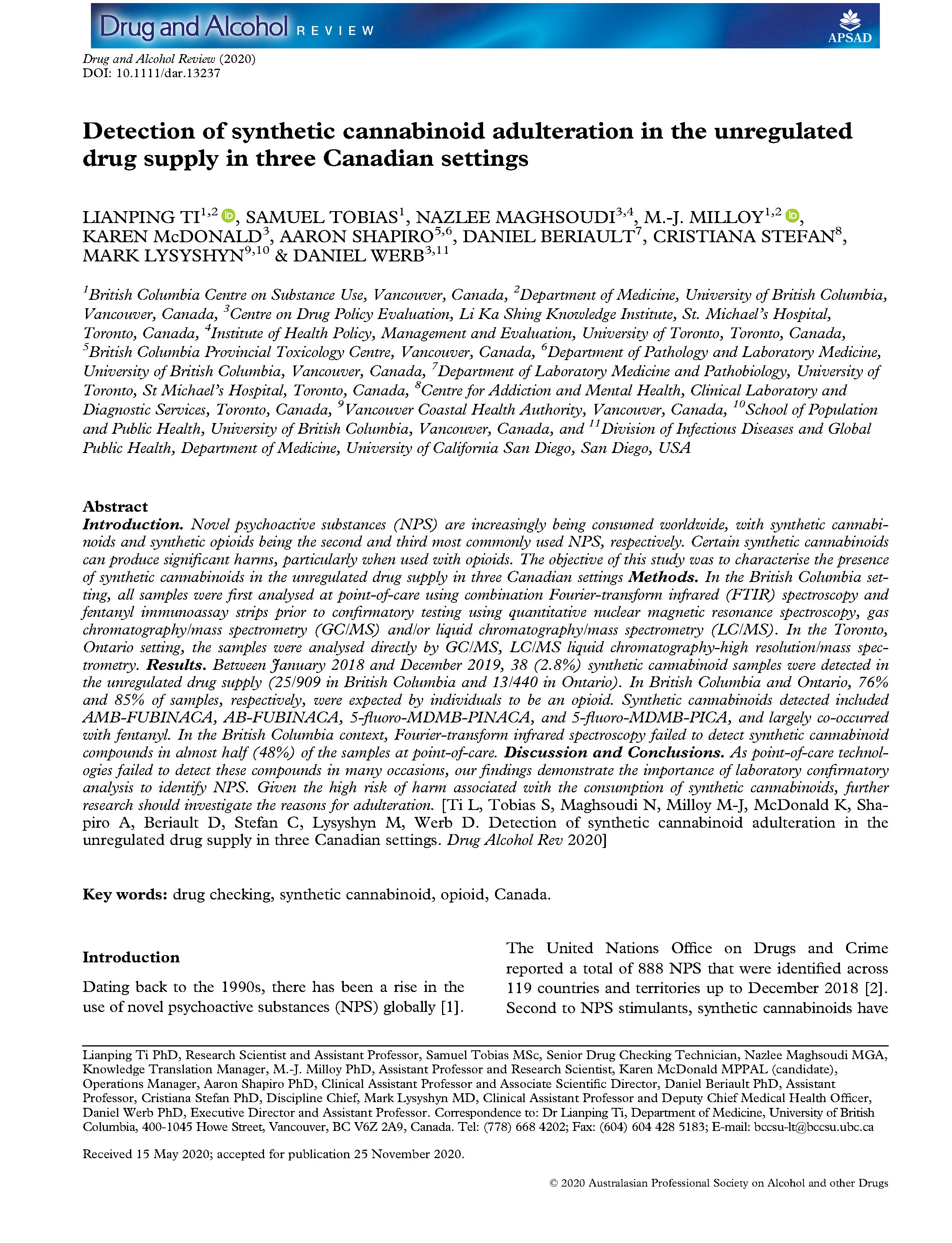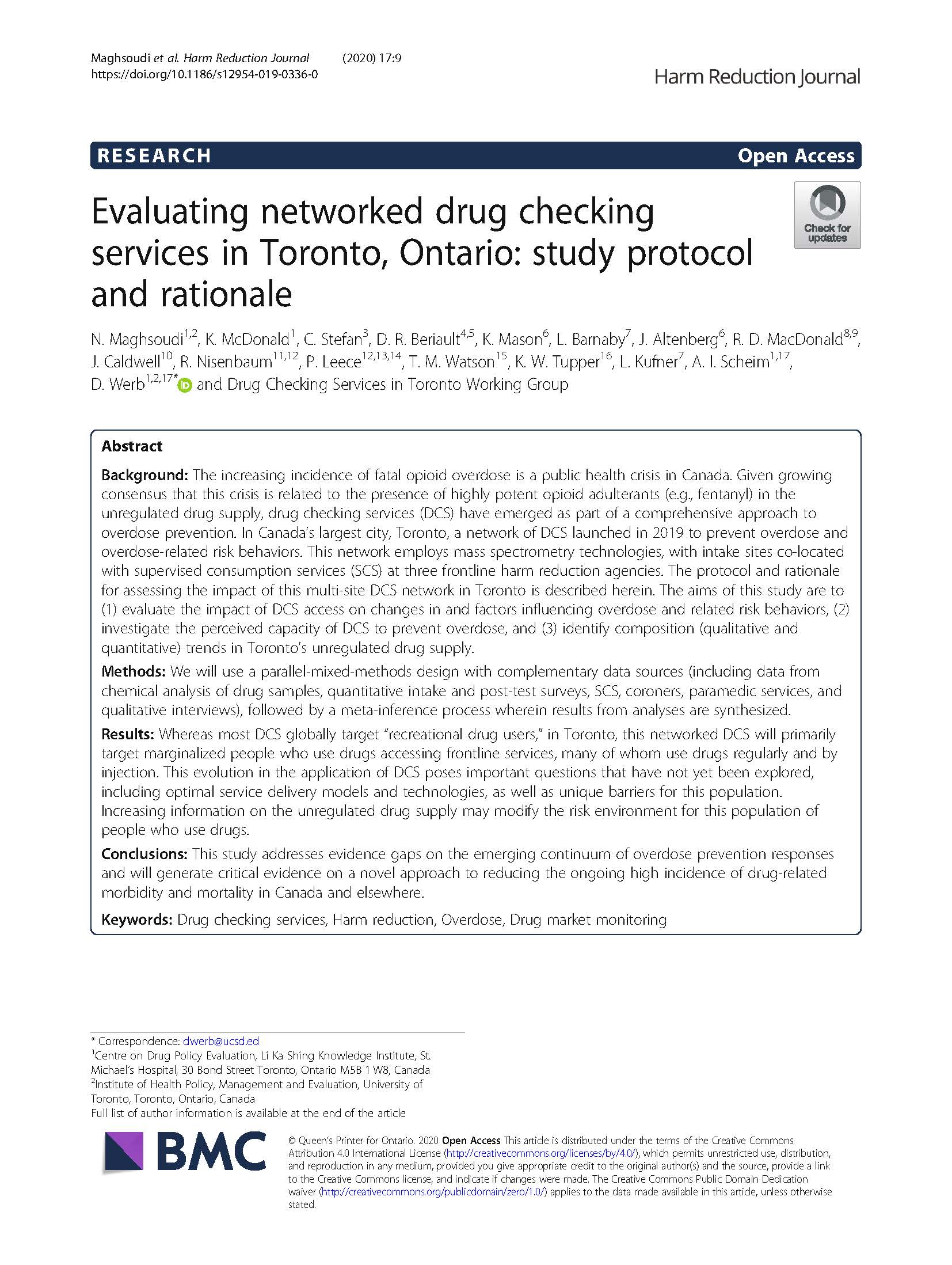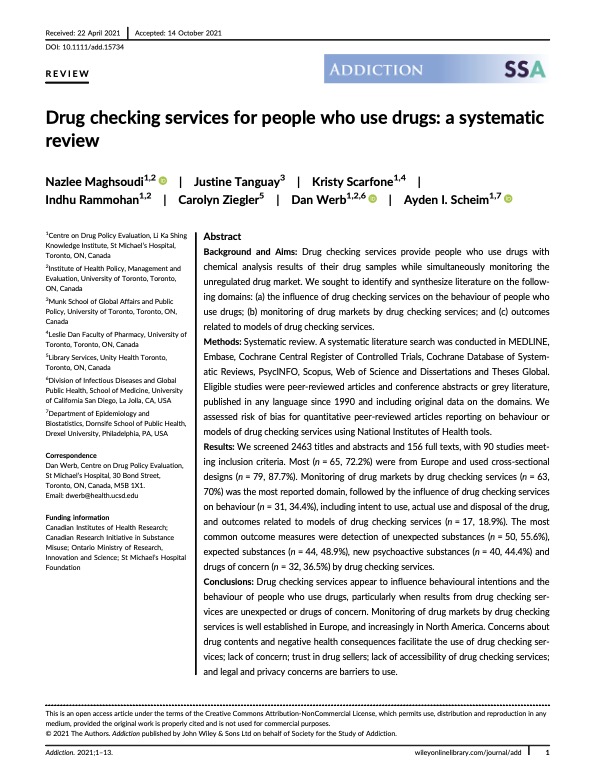What’s in Toronto’s drug supply? Results from samples checked by Toronto’s drug checking service: January 1 – December 31, 2020
On behalf of its partners, Toronto’s drug checking service is releasing its 2020 annual report, What’s in Toronto’s Drug Supply?, summarizing results from samples checked between January 1 – December 31, 2020.
Toronto’s drug checking service launched in October 2019, offering free and anonymous drug checking using mass spectrometry technologies (gas chromatography and liquid chromatography). The service provides people who use drugs with timely and comprehensive information on the composition of their drugs, helping them to make more informed decisions. The service also publicly shares information on Toronto’s unregulated drug supply, helping harm reduction workers and clinicians tailor the care they provide to people who use drugs, as well as advocates for services and safer alternatives for people who use drugs.
2020 marks the first full year of operation for Toronto’s drug checking service. While the COVID-19 state of emergency has certainly presented challenges, service utilization increased steadily from April onward. In 2020, 1,657 samples were checked and reported for a variety of drugs.
Learn more about key findings, specific drugs, and significant operational accomplishments from 2020 by reading the full report.
Key Findings from samples checked between January 1 – December 31, 2020:
- 1,657 samples were checked: 59% were substances and 41% were used paraphernalia
- 53% of samples checked were expected to be fentanyl
- Expected fentanyl samples were varying shades of purple, pink, red, blue, green, yellow, or white
- 7% of expected fentanyl samples were known to be associated with an overdose: 98% of those samples contained fentanyl and 77% of those samples contained both fentanyl and a benzodiazepine-related drug
- Xylazine, a tranquilizer used by veterinarians, was first identified in September and presented in 7% of expected fentanyl samples in October to December
- Carfentanil resurged in September, presenting in 2% of expected fentanyl substances in July to December
- 63% of expected fentanyl substances contained benzodiazepine-related drugs in October to December, compared to 39% in January to March
- 31% of expected heroin substances contained fentanyl
- Presence of the two most common cocaine adulterants – phenacetin and levamisole – increased by more than 100% between January and December in expected cocaine substances
- Substances expected to be opioids continue to be significantly more contaminated than other expected drugs – meaning there were a lot of other drugs found in each expected opioid substance:
- 5% of fentanyl substances contained only fentanyl
- No heroin substances contained only heroin
Meanwhile:
-
- 78% of ketamine substances contained only ketamine
- 75% of methamphetamine substances contained only methamphetamine
- 45% of cocaine substances contained only cocaine


